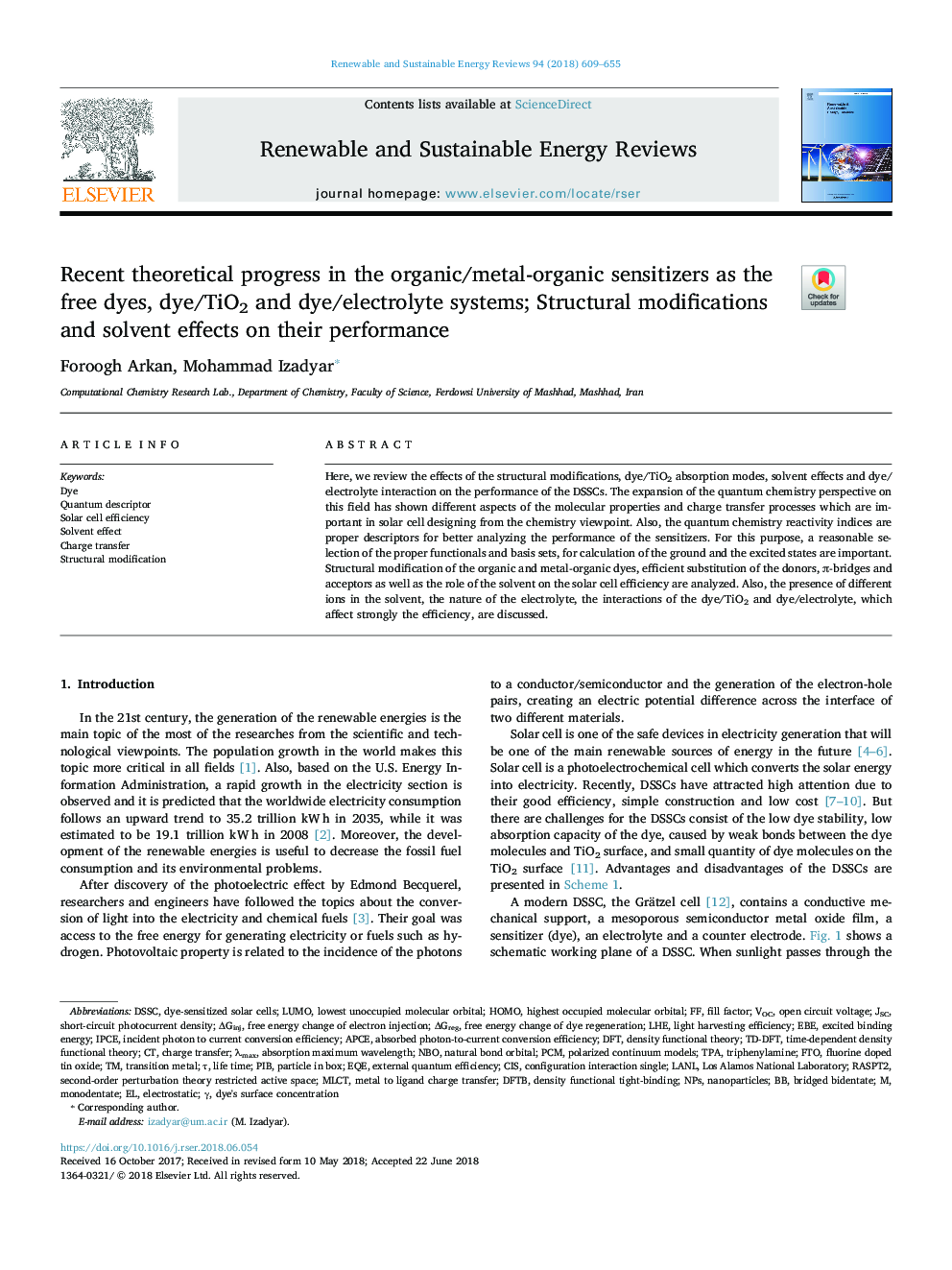| Article ID | Journal | Published Year | Pages | File Type |
|---|---|---|---|---|
| 8110492 | Renewable and Sustainable Energy Reviews | 2018 | 47 Pages |
Abstract
Here, we review the effects of the structural modifications, dye/TiO2 absorption modes, solvent effects and dye/electrolyte interaction on the performance of the DSSCs. The expansion of the quantum chemistry perspective on this field has shown different aspects of the molecular properties and charge transfer processes which are important in solar cell designing from the chemistry viewpoint. Also, the quantum chemistry reactivity indices are proper descriptors for better analyzing the performance of the sensitizers. For this purpose, a reasonable selection of the proper functionals and basis sets, for calculation of the ground and the excited states are important. Structural modification of the organic and metal-organic dyes, efficient substitution of the donors, Ï-bridges and acceptors as well as the role of the solvent on the solar cell efficiency are analyzed. Also, the presence of different ions in the solvent, the nature of the electrolyte, the interactions of the dye/TiO2 and dye/electrolyte, which affect strongly the efficiency, are discussed.
Keywords
LANLLHeEBEDFTBJscShort-circuit photocurrent densityMLCTAPCEPiBλmaxTD-DFTtPAIPCEDSSCEQECISPCMVOCNBODFTNPsLos Alamos National LaboratorySolvent effectStructural modificationElectrostaticCharge transferMetal to ligand charge transferHomoFluorine doped tin oxideExternal quantum efficiencyhighest occupied molecular orbitaltriphenylamineFTOLight harvesting efficiencyDyeDye-sensitized solar cellslife timeFill factortransition metalLUMONatural Bond OrbitalMonodentateNanoparticlesDensity functional theoryTime-dependent density functional theoryopen circuit voltageSolar cell efficiencyLowest Unoccupied Molecular Orbital
Related Topics
Physical Sciences and Engineering
Energy
Renewable Energy, Sustainability and the Environment
Authors
Foroogh Arkan, Mohammad Izadyar,
